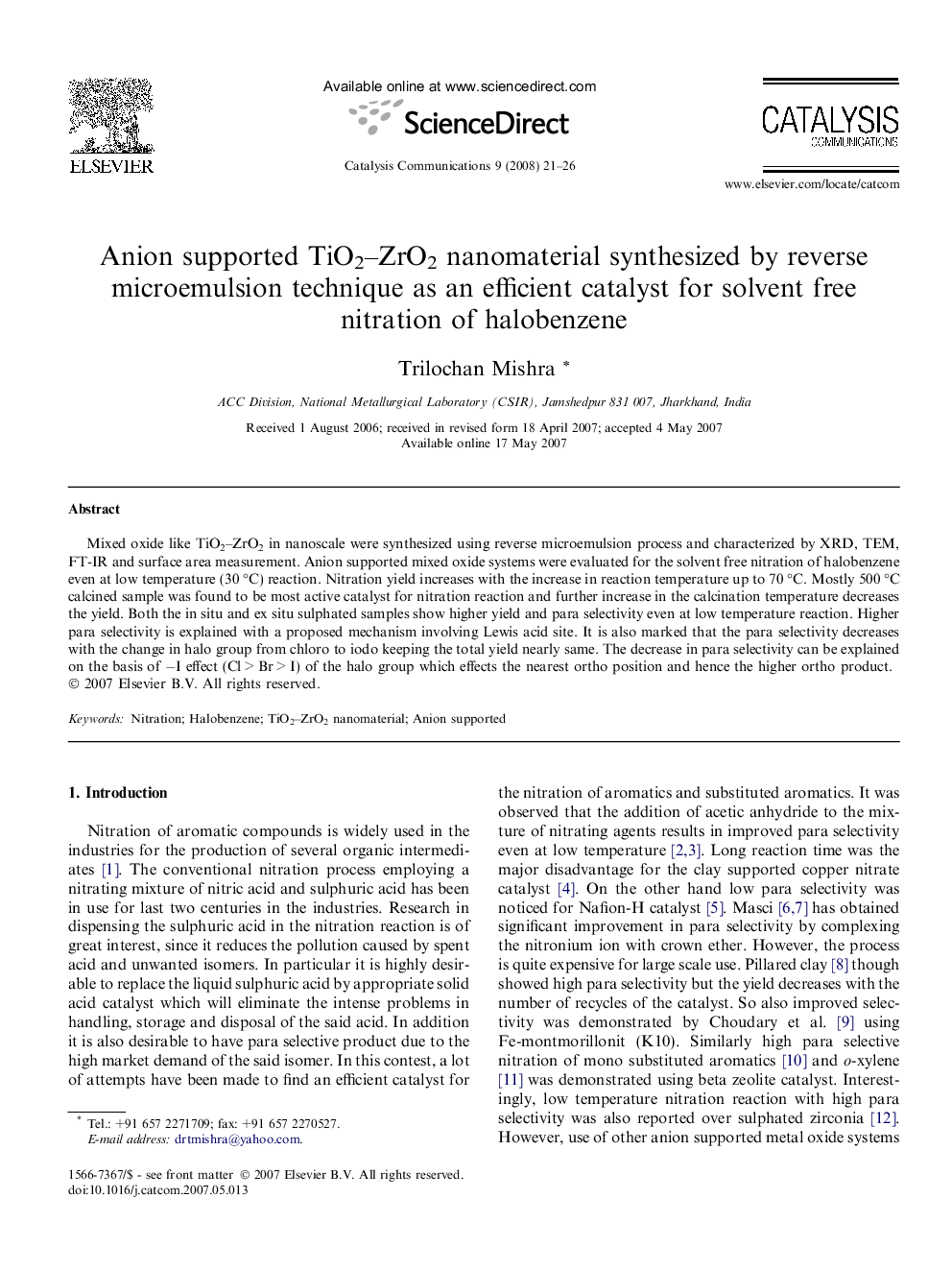| Article ID | Journal | Published Year | Pages | File Type |
|---|---|---|---|---|
| 52365 | Catalysis Communications | 2008 | 6 Pages |
Mixed oxide like TiO2–ZrO2 in nanoscale were synthesized using reverse microemulsion process and characterized by XRD, TEM, FT-IR and surface area measurement. Anion supported mixed oxide systems were evaluated for the solvent free nitration of halobenzene even at low temperature (30 °C) reaction. Nitration yield increases with the increase in reaction temperature up to 70 °C. Mostly 500 °C calcined sample was found to be most active catalyst for nitration reaction and further increase in the calcination temperature decreases the yield. Both the in situ and ex situ sulphated samples show higher yield and para selectivity even at low temperature reaction. Higher para selectivity is explained with a proposed mechanism involving Lewis acid site. It is also marked that the para selectivity decreases with the change in halo group from chloro to iodo keeping the total yield nearly same. The decrease in para selectivity can be explained on the basis of −I effect (Cl > Br > I) of the halo group which effects the nearest ortho position and hence the higher ortho product.
